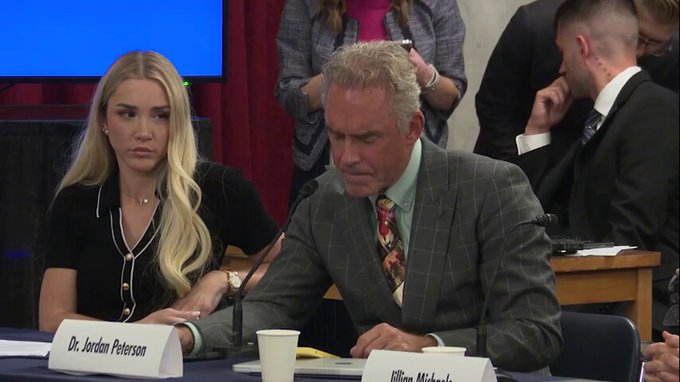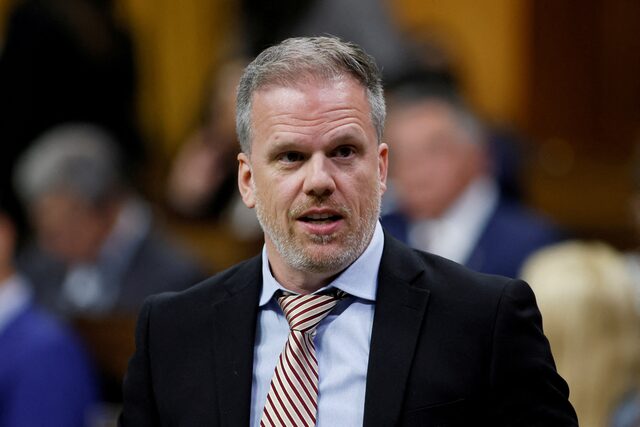Isn’t it just marvelous how Ontario’s Health Ministry has managed to turn euthanasia into a delightful game of hide-and-seek with their creative billing tactics? Who needs transparency and honesty when you can bill deadly procedures as palliative care, right? Bravo, Ontario, for taking deception to a whole new level in the healthcare system. I can only imagine the joy on the faces of taxpayers as they discover their hard-earned money has been expertly funneled into a mysterious world of euphemisms and inflated costs. Truly, a masterclass in bureaucratic acrobatics! Stay tuned for the next episode of “Medical Billing Magic,” where nothing is as it seems, and taxpayer dollars disappear faster than you can say “patient rights.”
The Ontario Health Ministry has come under scrutiny after records obtained through a Freedom of Information request revealed a shocking truth – procedures for euthanasia are being billed under codes designated for “palliative care.” This revelation, brought to light by pro-life researcher and blogger Patricia Maloney, has far-reaching implications and sheds new light on the actual taxpayer cost of these deadly procedures.
The Ontario Ministry of Health was approached by Maloney, who requested a comprehensive breakdown of the expenses associated with euthanasia, also known as Medical Assistance in Dying (MAiD), in the province. She specifically sought the fee codes that doctors were instructed to utilize when billing for MAiD services. In response to her request, Maloney received a Quick Reference Guide titled “OHIP Payments for Medical Assistance in Dying (MAID),” which she asserts is not publicly available.
The Quick Reference Guide discloses a disconcerting breakdown of the services that can be billed under the palliative care support billing code (K023), including MAiD procedures. Astonishingly, the document specifies that “Palliative care support (K023) should be claimed for the duration of time spent on the provision of medical assistance in dying.” It goes on to outline that this includes not only the time spent with the patient and family, but also travel time, obtaining consent, drug administration, pronouncement and certification of death, counseling, meeting reporting requirements, and notifying the coroner’s office.
According to the Quick Reference Guide, a maximum of two physicians can be remunerated using the K023 code for the provision of medical assistance in dying. The document also emphasizes that claims related to procedural planning, case management, the actual provision of MAiD, and travel to the patient’s home should be flagged to indicate that the patient encounter is associated with MAiD.
Maloney was quick to point out the contradiction, noting that patients receiving these services do not necessarily need to be palliative, yet a billing code intended for palliative care is being employed. This raises concerns about the transparency and accuracy of the cost associated with MAiD procedures.
Moreover, Maloney highlighted further billing details contained in the document. One such detail reveals that if the administration of the fatal dose of medication is intravenous (IV), an additional billing code, G379, can be utilized to cover the insertion of the IV. The document also mentions that billing code A945, designated for special palliative care consultation, can be used in conjunction with K023 if the duration of the consult exceeds 50 minutes.
Curiously, Ontario’s Schedule of Benefits Physician Services Under the Health Insurance Act, a comprehensive document spanning 990 pages, does not make any mention of MAiD. This suggests the existence of a separate, undisclosed document specifically created to guide doctors on how to bill the Ontario Health Insurance Plan (OHIP) when euthanizing their patients.
This discrepancy becomes even more apparent when compared to the practices in other provinces. In Alberta and Quebec, for instance, the full costs associated with MAiD procedures are transparently disclosed, leaving no room for hidden information. Ontario, as Canada’s most populous province, is shown to be engaged in what Maloney describes as a “double cover-up.” This implies that the actual costs of euthanizing patients are not accurately represented, while simultaneously inflating the expenses attributed to palliative care.
Alex Schadenberg, the Executive Director of the Euthanasia Prevention Coalition, also discovered a similar pattern in British Columbia. In his recent blog, he revealed that the province paid for over 3,900 euthanasia deaths within the palliative care provincial budget in 2022, further reinforcing the utilization of “palliative care billing codes” for MAiD.
The implications of these revelations are deeply concerning. It appears that the Ontario Ministry of Health, along with other provinces, is not only concealing the true cost of MAiD but also potentially manipulating the funding allocated to palliative care. By disguising euthanasia procedures under the umbrella of palliative care, the government may be diverting resources from genuine palliative care services, thereby compromising end-of-life care for those truly in need.
This recent development is part of a broader context surrounding euthanasia in Canada. The Trudeau government legalized euthanasia in 2016, and since then, the number of deaths under the MAiD program has risen dramatically. The passage of Bill C-7 in 2021 expanded the eligibility for assisted death to include those suffering solely from mental illness and the chronically ill, not just the terminally ill.
However, this expansion faced significant backlash from pro-life groups, conservative politicians, and concerned citizens. As a result, the full effect of Bill C-7 was delayed until 2024 through Bill C-39, which was enacted on March 9. Despite these controversies and the increasing number of state-sanctioned assisted suicides, the government’s transparency regarding the costs of MAiD remains questionable.
In 2022 alone, there was a staggering 35% increase in state-sanctioned assisted suicides in Canada, with an estimated 13,500 lives lost through these procedures. The lack of accurate cost reporting not only raises ethical concerns but also hinders the ability to assess the impact of MAiD on healthcare resources and allocation.
The implications of using palliative care billing codes for euthanasia procedures are far-reaching. The Ontario Health Ministry’s approach raises serious questions about accountability, transparency, and the overall integrity of the healthcare system. It is crucial that these concerns are addressed, and that the true costs and consequences of MAiD are made known to the public.
As the debate surrounding euthanasia and its impact on healthcare continues, it is imperative to prioritize open and honest dialogue. The welfare of patients and the ethical responsibilities of healthcare providers should be at the forefront of any discussion. The public deserves accurate information and a comprehensive understanding of the implications associated with these life-altering decisions.










